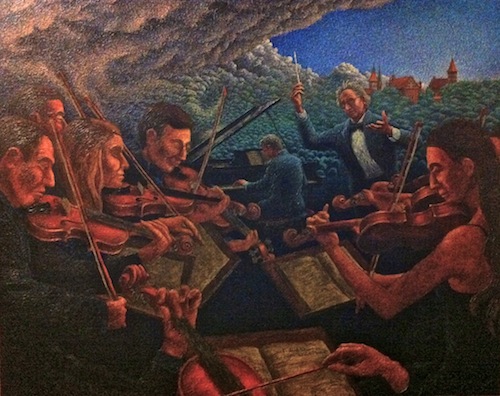Tony Johansen
21 Feb 2012
Love / My Polish wife got married to me but she's still not in love? [34]
My first thought is of course to ask why would one marry someone who doesn't love you, but human experience is more complex than simple reactions like that.
There are many traditional societies in which marriage is arranged by the families and the future marriage partners have little say in the matter. There have been many studies of this and with surprising results. In the first few years of marriage it appears that one or both (but most often the woman) is less happy within the arranged marriage than is true within more modern 'love choice/romance based' weddings but that after about 5 years reported happiness rates are very similar for love based or arranged marriages. After 10 years the arranged marriages report greater feelings of happiness with the marriage than love/romance based marriages do. This is not every case of course (a woman who is physically abused by her husband will never be happy no matter how her marriage originated) but for most the long term best results happen where two people face adversity together and then allow love to grow from their shared experience. Romance and 'true love' at the beginning does not last so well, especially where there is unrealistic expectation of romantic play lasting forever.
Ultimately is does seem that whether or not a marriage will be a good one for the long term has less to do with romantic love than we generally believe. Far better indicators of future happiness are found in commitment to a common cause, acceptance of the other 'for better or worse', and having realistic expectations of what the marriage can achieve. Mutual respect for the marriage and what that means is as important as mutual respect for each other.
When your wife tells you that it will take time to feel the love she sounds like a wise woman who will be a good partner to you for many years provided you learn to accept her in a way that she can respect. Good luck to both of you.
My first thought is of course to ask why would one marry someone who doesn't love you, but human experience is more complex than simple reactions like that.
There are many traditional societies in which marriage is arranged by the families and the future marriage partners have little say in the matter. There have been many studies of this and with surprising results. In the first few years of marriage it appears that one or both (but most often the woman) is less happy within the arranged marriage than is true within more modern 'love choice/romance based' weddings but that after about 5 years reported happiness rates are very similar for love based or arranged marriages. After 10 years the arranged marriages report greater feelings of happiness with the marriage than love/romance based marriages do. This is not every case of course (a woman who is physically abused by her husband will never be happy no matter how her marriage originated) but for most the long term best results happen where two people face adversity together and then allow love to grow from their shared experience. Romance and 'true love' at the beginning does not last so well, especially where there is unrealistic expectation of romantic play lasting forever.
Ultimately is does seem that whether or not a marriage will be a good one for the long term has less to do with romantic love than we generally believe. Far better indicators of future happiness are found in commitment to a common cause, acceptance of the other 'for better or worse', and having realistic expectations of what the marriage can achieve. Mutual respect for the marriage and what that means is as important as mutual respect for each other.
When your wife tells you that it will take time to feel the love she sounds like a wise woman who will be a good partner to you for many years provided you learn to accept her in a way that she can respect. Good luck to both of you.
 PolishForums LIVE / Archives [3]
PolishForums LIVE / Archives [3]
